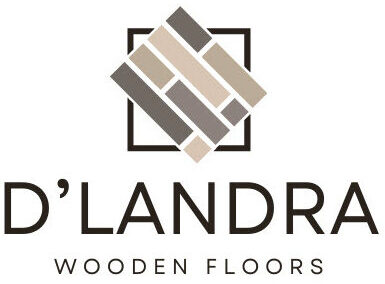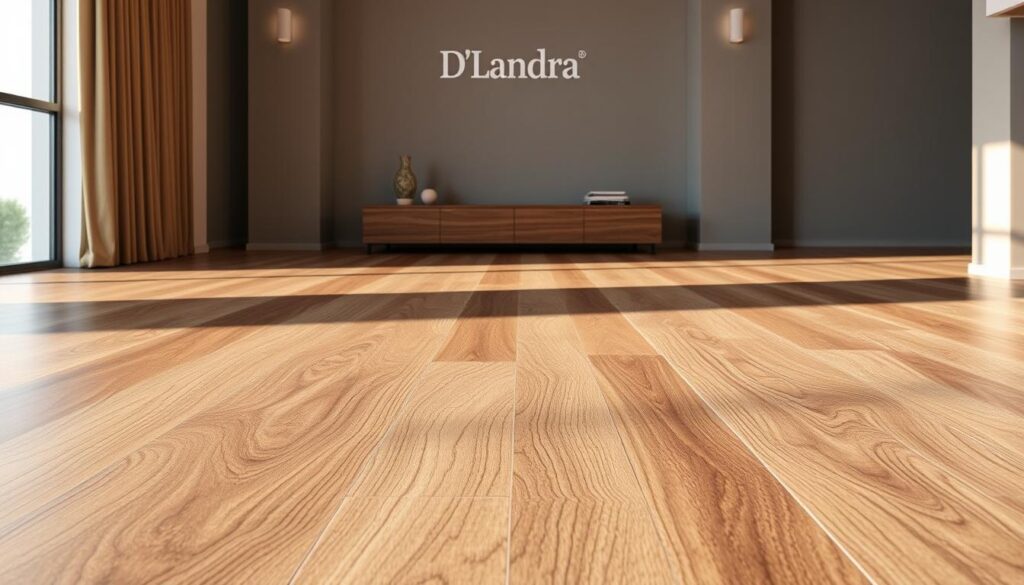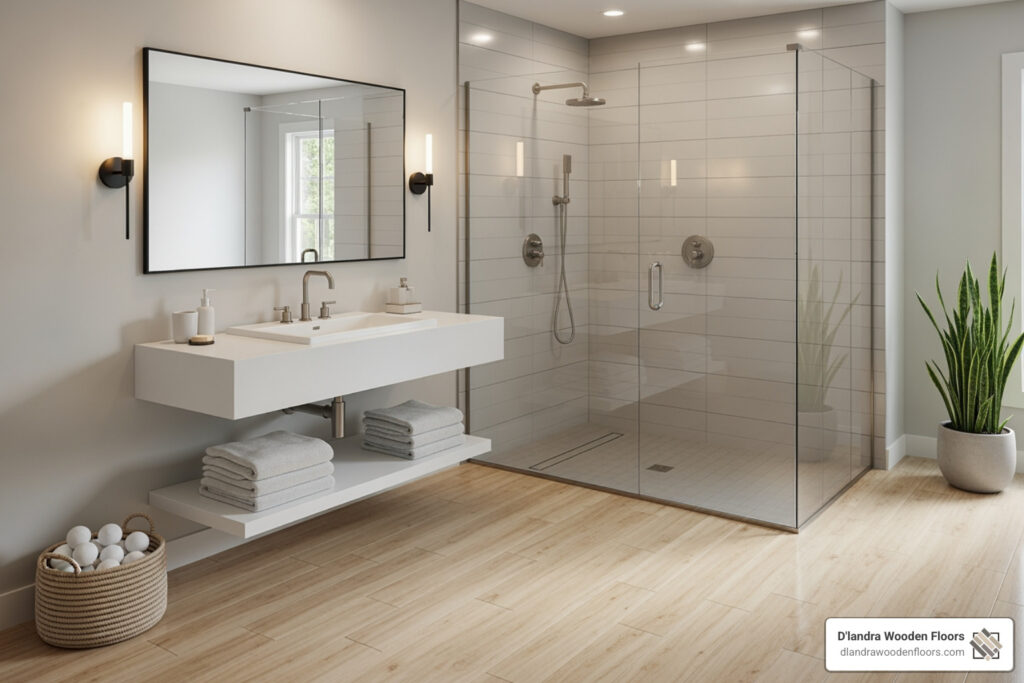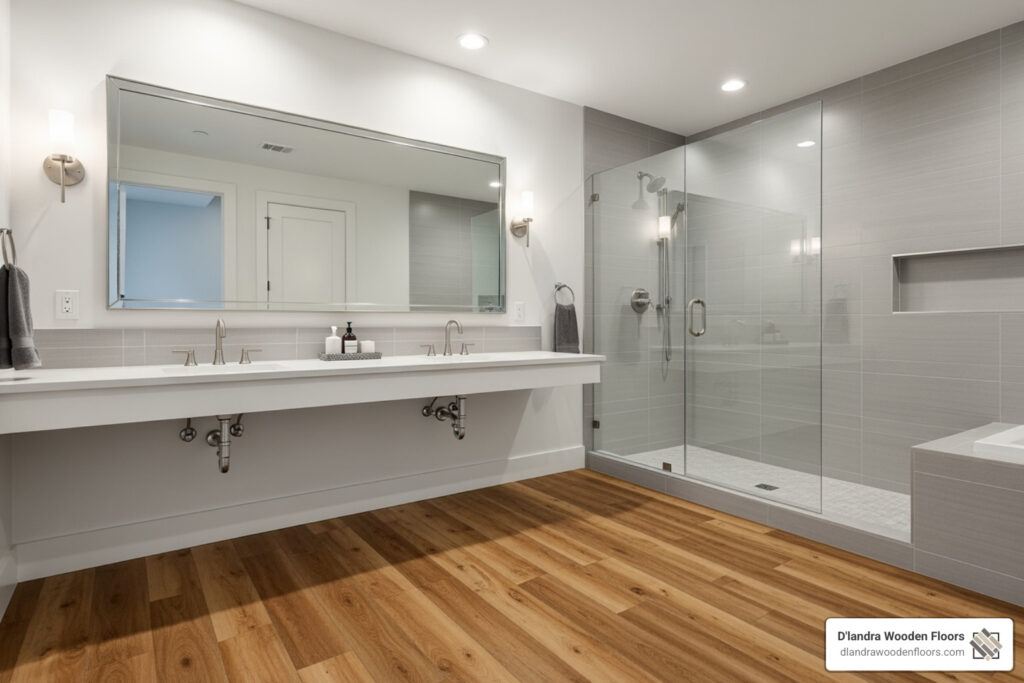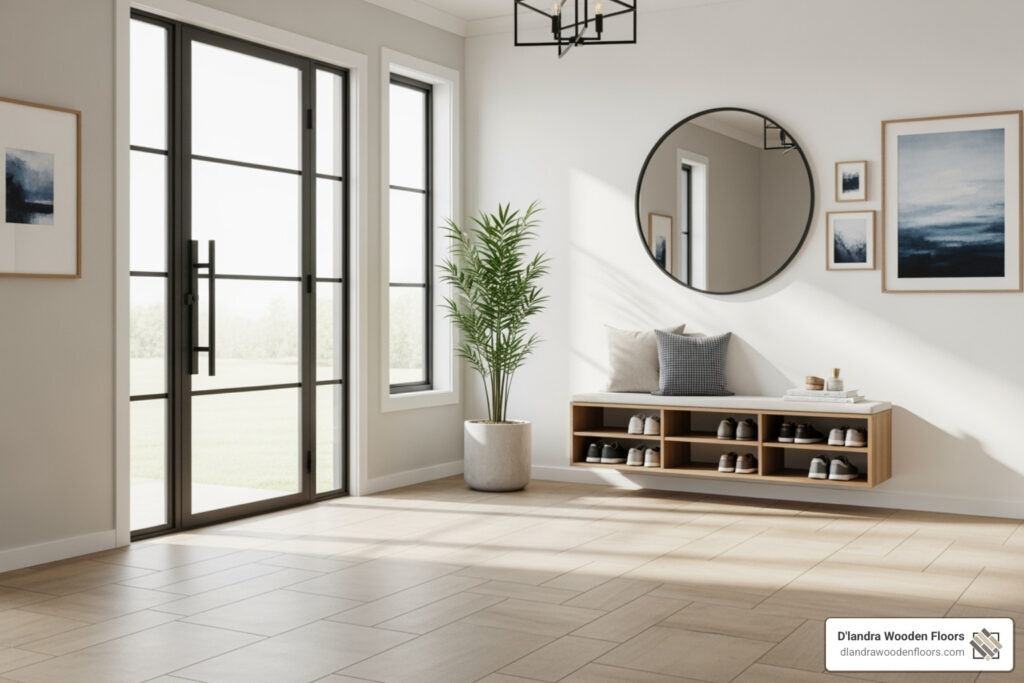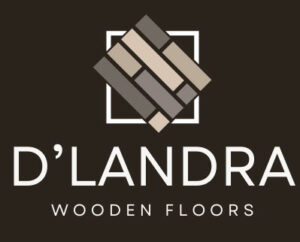Imagine walking into a room where every detail mirrors your design vision – without compromising on practicality. For decades, homeowners faced a tough choice: authentic materials that require constant care or durable surfaces lacking character. But what if you didn’t have to choose?
Today’s innovative materials blend handcrafted realism with cutting-edge engineering. Leading brands like DuraLux and NuCore offer options from $1.59 to $3.29 per square foot – a price point that surprises many. Thickness options range from 3mm to 6.5mm, while protective layers extend up to 30 mil for heavy-traffic areas.
You’ll find planks and tiles that mimic weathered oak, polished marble, or even concrete. Advanced printing techniques create textures so realistic, guests often can’t tell the difference. Yet these surfaces withstand spills, scratches, and daily wear far better than natural alternatives.
This guide reveals how modern solutions address common frustrations. No more refinishing wood every few years or replacing cracked tiles. Installation methods have evolved too – many products now feature click-lock systems for DIY-friendly setups.
Table of Contents
ToggleKey Takeaways
- Premium options cost between $1.59-$3.29/sq.ft with varying thickness (3mm-6.5mm)
- Top brands include OptiMax Performance, NuCore, and DuraLux
- Wear layers from 8 mil to 30 mil ensure long-lasting performance
- Authentic wood/stone visuals achieved through 3D printing technology
- Suitable for both residential and commercial spaces
Introduction to Luxury Vinyl Flooring
Transform your space with surfaces that combine elegance and practicality. Unlike older options that forced trade-offs between style and durability, today’s solutions deliver both. Advanced layered construction creates surfaces that handle daily life while maintaining stunning visuals.
Key Benefits and Features
These floors stand out through their multi-layer design. A wear layer protects against scratches, while the core resists moisture and impacts. Many products include attached underlayment for noise reduction – perfect for busy households.
Spills wipe away easily, and stains don’t penetrate the surface. Unlike natural materials, you won’t need special cleaners or waxing routines. A quick sweep or mop keeps them looking fresh for years.
Why It’s a Popular Choice Today
Homeowners love the cost savings compared to stone or hardwood. Installation costs stay low thanks to click-together systems that reduce labor time. Renters appreciate how easily planks can be removed without damaging subfloors.
Modern printing technology captures authentic wood grains and stone veining better than ever. Options range from farmhouse oak to industrial concrete looks, fitting any decor style. Environmentally conscious buyers value recyclable materials and low-VOC production methods in many newer lines.
Understanding Luxury Vinyl Plank Options
Your flooring choice shapes a room’s character before you add a single piece of furniture. Modern solutions offer diverse sizing and surface treatments that mimic natural materials while outperforming them in daily use. Let’s break down what makes these planks versatile for any design scheme.

Exploring Various Styles and Finishes
Surface details matter as much as color. Embossed textures replicate oak’s knots or slate’s roughness underfoot. Handscraped finishes add rustic charm, while smooth surfaces deliver contemporary minimalism. Brands like NuCore use 3D printing to align patterns with textures – a technique called embossed-in-register.
Want stone visuals without the cold feel? Textured options imitate travertine or marble veining. These surfaces resist fading better than natural stone, especially in sunlit rooms.
Comparing Plank Dimensions and Textures
Size impacts both aesthetics and function. Narrower planks (3″-5.99″) suit traditional spaces, while wider styles (8″+) create bold, modern statements. Longer lengths (72″-80″) make small rooms appear larger by reducing seams.
Thickness ranges from 3mm for low-traffic areas to 6.5mm for commercial use. Thicker options handle uneven subfloors better and feel more substantial underfoot. Always pair dimensions with your room’s proportions – oversized planks can overwhelm cozy spaces.
The Advantages of Luxury Vinyl Flooring
The right surface underfoot can redefine your living experience while saving time and money. Modern options blend resilience with style, offering protection against life’s messes without sacrificing visual appeal. Let’s explore why these solutions dominate today’s homes.
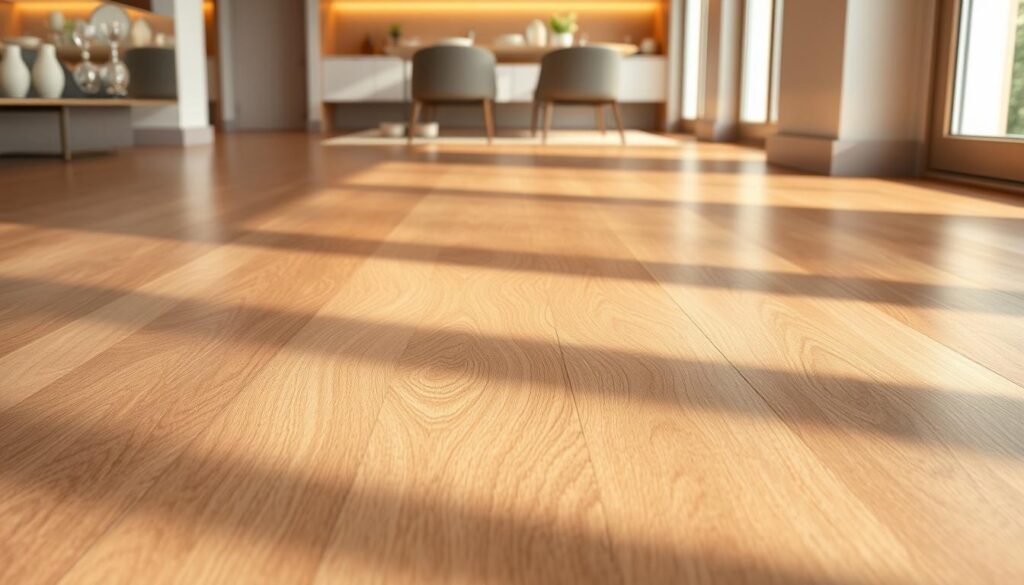
Durability and Affordability
Busy households need surfaces that withstand daily chaos. A 20-mil wear layer resists scratches from pet claws and chair legs. Spills wipe clean without staining, even with juice or coffee accidents.
Compare costs: authentic hardwood averages $6-$12 per sq.ft, while premium alternatives cost just $1.59-$3.29. Installation fees drop further with click-lock systems – no adhesives or pros required.
| Material | Cost per sq.ft | Lifespan | Maintenance |
|---|---|---|---|
| Luxury Vinyl | $1.59-$3.29 | 15-25 years | Daily sweeping |
| Hardwood | $6-$12 | 30+ years | Refinishing every 5-7 years |
| Ceramic Tile | $4-$8 | 50+ years | Grout cleaning |
Waterproof and Low-Maintenance Characteristics
Full waterproofing protects subfloors in bathrooms and basements. Unlike wood, moisture won’t warp or buckle planks. Spills stay surface-level – just wipe and go.
No waxing or polishing needed. A weekly mop with mild cleaner keeps surfaces pristine. Stains from markers or wine? They lift with basic household products.
Exploring Different Looks: Wood, Tile, and More
Design possibilities have expanded far beyond basic options, letting you craft spaces that mirror your exact vision. With over 150 wood-inspired designs and 11 stone patterns, today’s materials blur the line between imitation and reality. Let’s uncover how these surfaces achieve stunning authenticity while fitting modern lifestyles.
Authentic Textures That Impress
Modern wood-inspired designs capture every detail – from oak’s swirling knots to hickory’s bold grain variations. Advanced 3D printing aligns patterns with textured surfaces, creating planks you’ll want to touch. European collections showcase weathered barnwood and chevron patterns, while exotic styles mimic rare species like Brazilian teak.
Stone visuals surprise with their realism. Italian marble looks feature veining that flows naturally across tiles. Spanish limestone replicas include subtle fossil details. Even concrete and encaustic patterns get updates – think geometric motifs that pop in entryways or kitchens.
Color ranges help coordinate with your existing decor. Warm honey tones suit farmhouse kitchens, while ash-gray planks complement industrial lofts. Textile-inspired options add softness to bedrooms without sacrificing durability.
Specialty finishes solve design challenges. Glossy surfaces reflect light in dim spaces, matte options hide footprints. Embossed textures provide slip resistance, making stone looks practical for bathrooms. Every choice balances aesthetics with everyday functionality.
How Luxury Vinyl Flooring Enhances Your Home Aesthetics
What defines the heart of your home’s design? The surfaces underfoot set the stage for every decor choice. Modern materials now offer design flexibility that unifies rooms while adapting to your evolving tastes.
Modern vs. Traditional Design Inspirations
Clean lines and monochromatic schemes thrive with light blonde or ash-gray tones. These shades amplify natural light, making compact areas feel airy. Pair them with streamlined furniture for a crisp, contemporary look.
Rich browns and beiges anchor traditional spaces beautifully. They complement wood furnishings and intricate moldings without competing for attention. High-variation finishes add depth to classic patterns like herringbone or chevron.
| Color Family | Design Impact | Best For |
|---|---|---|
| Blonde/Natural | Brightens rooms | Small spaces |
| Gray/White | Modern edge | Open floor plans |
| Brown/Beige | Warmth | Formal areas |
| Black/Multi-Tone | Drama | Accent zones |
Transitioning between styles? Use shared undertones. A kitchen with cool gray planks can flow into a dining area featuring warmer greige tones. This maintains cohesion while defining separate zones.
Darker hues create intimacy in large rooms, while light-reflective surfaces make narrow hallways appear wider. Your choices influence both visual balance and daily comfort – warm tones feel inviting, cooler shades promote calm.
Installation Options for Vinyl Plank Flooring
What determines how quickly your floors go from box to beautiful? The answer lies in your installation method. Modern systems offer two distinct approaches, each with unique advantages for different spaces and skill levels.
Floating or Locking Systems versus Glue Down Techniques
Click-lock systems dominate DIY projects for good reason. Their tongue-and-groove edges snap together without adhesives, creating stable surfaces that “float” over subfloors. Many products include attached foam or cork layers, reducing noise by up to 50% compared to traditional methods.
Glue-down installations excel in high-traffic areas like stores or hospitals. Permanent adhesion prevents shifting under heavy use. This method requires smoother subfloors but offers unmatched stability for commercial spaces.
| Method | Best For | Prep Needs | DIY Difficulty |
|---|---|---|---|
| Click-Lock | Residential, uneven surfaces | Moisture test, underlayment | Beginner-friendly |
| Glue-Down | Commercial, concrete floors | Leveling, primer application | Professional recommended |
Your subfloor condition dictates preparation steps. Floating floors tolerate minor imperfections, while glued surfaces need near-perfect flatness. Always check manufacturer warranties – some require certified installers for coverage.
Basic tools like tapping blocks work for click systems. Glue applications demand notched trowels and ventilation. Choose based on your timeline: floating installs finish faster, while adhesive setups need drying periods.
All About Waterproof Properties and Resilience
When moisture threatens your home, the right materials make all the difference. Every product in this category offers complete waterproof protection, from surface to core. Whether it’s spilled drinks or basement floods, these surfaces lock out water while maintaining their appearance.
True waterproofing differs from basic water resistance. While water-resistant options might handle small spills, fully waterproof materials prevent all moisture penetration – even when submerged. This makes them ideal for bathrooms, laundry rooms, and kitchens where accidents happen daily.
| Feature | Waterproof | Water-Resistant |
|---|---|---|
| Moisture Protection | Full submersion safe | Light spills only |
| Installation Areas | Basements, bathrooms | Low-traffic zones |
| Longevity in Wet Conditions | 25+ years | 5-10 years |
Core layers use rigid polymer composites that won’t swell or warp. Heavy furniture leaves temporary indentations that disappear within hours. Even pet claws and high heels can’t crack the wear layer.
In flood-prone areas, these surfaces protect subfloors from mold and rot. Spills wipe clean without leaving stains or odors. You’ll save hours on maintenance compared to materials needing sealants or special cleaners.
Exploring Product Categories for Luxury Vinyl Flooring
The foundation of a great floor starts beneath the surface. Two innovative categories dominate modern installations, each engineered for specific needs. Understanding their construction helps you choose materials that align with your space’s demands.
Rigid Core and Hybrid Types Explained
Rigid core options use stone plastic composite (SPC) or wood plastic composite (WPC) layers. These dense cores prevent warping on uneven subfloors – a common issue in older homes. SPC’s mineral-based design handles temperature changes better, while WPC offers slightly softer underfoot comfort.
Hybrid resilient products merge multiple technologies. Some combine cork layers with polymer cores for noise reduction. Others integrate foam backings to cushion high-traffic areas. These solutions target specific challenges like echo reduction in open-concept spaces or thermal insulation in basements.
| Feature | Rigid Core | Hybrid |
|---|---|---|
| Core Material | SPC/WPC | Multi-layer composites |
| Best For | Uneven surfaces | Sound-sensitive areas |
| Installation Ease | Click-lock systems | Varies by design |
With 138 rigid core and 23 hybrid options available, you’ll find solutions for every scenario. Thicker rigid cores (6.5mm+) mask subfloor imperfections effectively. Hybrids often require less prep work in rooms needing acoustic control.
New manufacturing techniques maintain affordability while boosting durability. Many products now feature zero-expansion gap designs for seamless transitions between rooms. Always check thickness ratings and core composition when matching materials to your project’s needs.
Choosing the Perfect Luxury Vinyl Flooring for Your Space
Every room has unique demands, and your flooring should meet them head-on. Start by evaluating how each space gets used – high-traffic areas need different specs than quiet bedrooms. Your design goals and practical needs must work together for lasting satisfaction.
Factors to Consider Before Your Purchase
Thickness impacts performance. Opt for 3mm-4mm planks in low-traffic zones like closets. Choose 6mm-9mm options for kitchens or hallways – they handle heavy use better and mask subfloor imperfections.
Wear layer thickness directly affects durability. Residential spaces thrive with 12-20 mil layers, while commercial areas need 28+ mil. Pets or rolling chairs? Prioritize higher protection to avoid surface scratches.
Plank dimensions shape your room’s visual flow. Narrow widths (3″-5″) suit traditional spaces, while 8″+ planks create modern drama. Longer lengths reduce seams in open layouts but require precise measurements for complex angles.
Color and pattern should harmonize with your existing palette. Warm browns add coziness to living rooms, while cool grays modernize offices. Order samples to test how natural light alters tones throughout the day.
Balance these elements to find materials that elevate your space without compromising on function. With smart planning, your floors become a seamless extension of your lifestyle.
